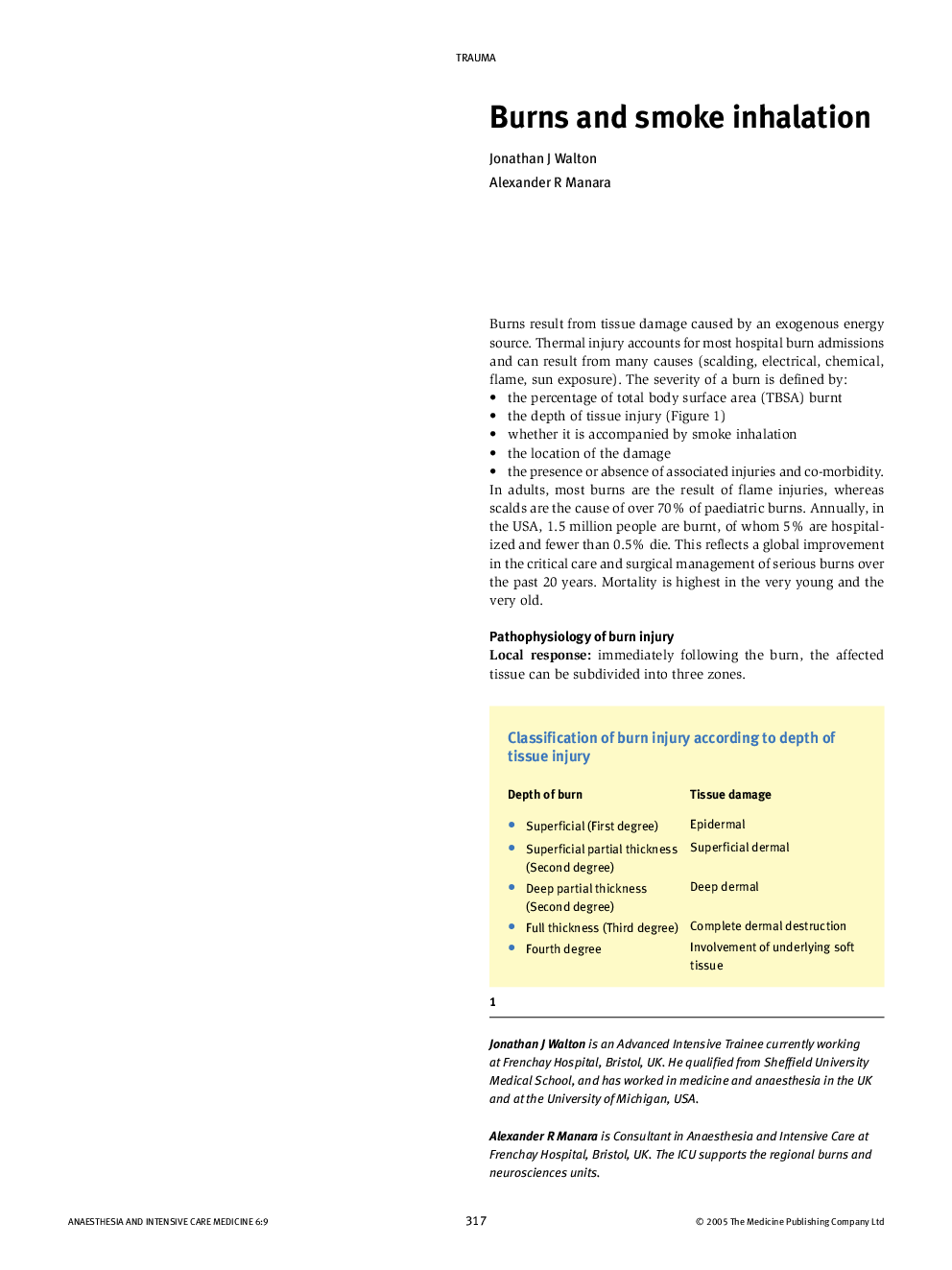| Article ID | Journal | Published Year | Pages | File Type |
|---|---|---|---|---|
| 9089678 | Anaesthesia & Intensive Care Medicine | 2005 | 5 Pages |
Abstract
The mortality of burn injury has decreased over the past 20 years thanks to effective resuscitation and early surgical intervention. Burn severity is classified according to depth of tissue injury, total body surface area affected and the presence or absence of an inhalation injury. These data are used to calculate the patient's fluid resuscitation requirements. Acute treatment of the burn patient aims to limit extension of the tissue injury and prevent end-organ damage. Following the acute phase treatment of the burn patient, intensive care priorities include nutritional support of the hypercatabolic patient, pain control and early recognition and treatment of sepsis. The patient also requires multiple surgical interventions to debride, graft and dress the burn wounds. Inhalation injury is associated with an increased mortality in burn patients. Diagnosis relies on a combination of clinical suspicion coupled with bronchoscopic evidence of injury to the bronchial tree. Inhalation injury is subdivided into direct thermal injury to the airway, usually seen above the glottis, and chemical tracheobronchitis below the airway, resulting from inhalation of the incomplete products of combustion. Inhalation injury can be complicated by carbon monoxide and cyanide poisoning.
Keywords
Related Topics
Health Sciences
Medicine and Dentistry
Anesthesiology and Pain Medicine
Authors
Jonathan J Walton, Alexander R Manara,
